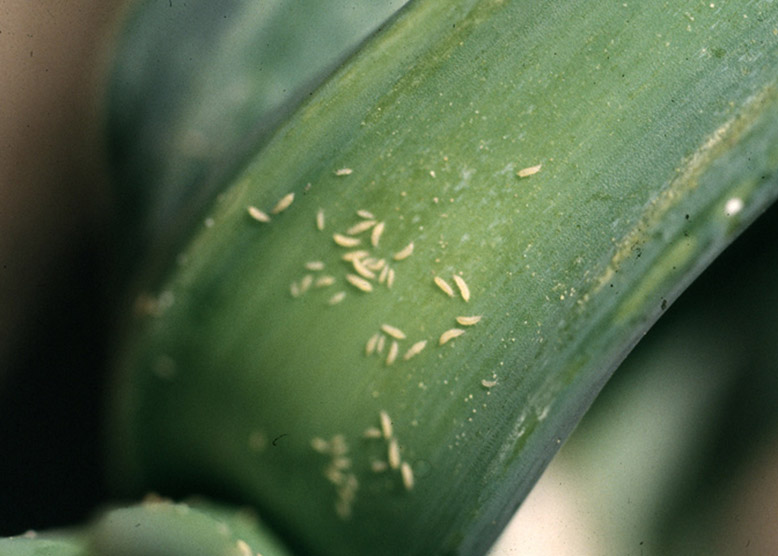
Tips to Control Thrips in Your Garden
Thrips are a pest that many gardeners deal with every gardening season. We even had our own struggles with thrips this summer! Check out our Instagram post to see the damage we had and how we treated it!
What are thrips?
Thrips are tiny insects that are about as thin as a sewing needle. They have rasping-sucking mouthparts used to feed on plant parts. This distorts the plants, causing damage, which can be even worse if the pest transmits disease to your plants in the process. Thrips become active in the early spring and lay eggs in plant tissue. Eggs hatch after 3-5 days, and then feed for 1-3 weeks before resting to molt in 1-2 weeks. Adults live a short life of about one month, but thrips can have up to 15 generations per year.
Signs of Thrips
Thrips can range in color from yellow to brown or black. If you get close to them, they may leap or fly away. Damage includes yellowing of your leaves, black specs, and small silver patches. You may also see streaks or stippled leaves.
If you have a major infestation of thrips, you may notice extensive damage to flowers and fruit. Damage can also come from a virus that thrips spread, such as tomato spotted wilt virus.
How to Control Thrips
When deciding how you want to treat thrips, you will want to use a nontoxic method to avoid damaging your plant as well. A quick initial solution is to shake the leaves that the thrips are on and catching them on a cloth underneath. However, this does not guarantee all the thrips will be removed, and may not stop them from returning. When controlling, you will want to dispose of any damaged areas of the plant. Regular pruning helps to get rid of thrips. Using a mild insecticide containing neem when you first see signs of damage will rid your plants of this pest. Regular application will keep them from coming back.
As a neem-based product, AzaSol provides an exceptionally potent, non-oil based, and environmentally friendly insect control solution. It is absorbed through both the leaf tissue and roots, so the entire plant is protected. Once absorbed, the product lasts longer in the plant versus degrading in the outside environment. OMRI listed for organic use, AzaSol won’t burn leaves or block photosynthesis, and you can harvest food crops the same day as treatment. Users can apply this product indoors or outdoors. You can spray and/or drench AzaSol. For best results, we recommend re-applications at 7 to 10 day intervals to protect new plant growth and control new generations of insects missed from the last spray.
Check out the video below to see how we used AzaSol in our garden to treat thrips!
Have questions about your garden? Contact us!
Connect with us on Facebook, Twitter, Instagram, and Youtube!


Sorry, the comment form is closed at this time.